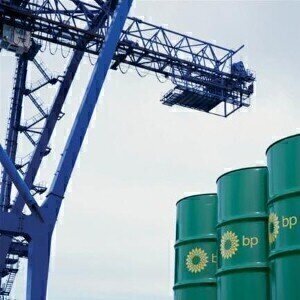Fuel for Thought
Standard Guide for EALs
Jun 18 2021
Various industry stakeholders define biolubricants in different ways, so how can the different products on the market be distinguished from each other? To help answer this question, two ASTM committees began collaborating on a guide to EALs that comply with the U.S. VGP.
“I believe the people working on this issue understood how important it was that the EALs perform well on vessels and also how little the marine industry as a whole knew about EALs,” says John Sherman. He is project lead for PAG (polyalkylene glycol) lubricant technology at Shell Lubricant Solutions (U.S.) Inc., and a member of both the petroleum products committee and the ships and marine technology committee. Sherman is also a key contributor to a recently approved standard that will increase that knowledge.
The process leading to the new guide for selection of environmentally acceptable lubricants for the EPA Vessel General Permit (WK68688) began in earnest in 2015, when Sherman began coordinating the efforts of two subcommittees that agreed to work together on this document: marine environmental protection (F25.06) and environmental standards for lubricants (D02.12). The initial draft was presented in December 2015 and served as the starting point for the collaboration that began in earnest the following year.
The draft standard was ready for an initial ballot in June 2018. However, the five-year update to the VGP that was pending at the time, along with the subsequent December 2018 enactment the Vessel Incidental Discharge Act (VIDA), which will ultimately supersede the 2013 VGP, delayed the process.
VIDA requires the EPA to develop national performance standards to address incidental commercial vessel discharges by December 2020. Two years after the EPA publication of these final Vessel Incidental Discharge National Standards of Performance, the U.S. Coast Guard (USCG) is required to develop corresponding implementation, compliance, and enforcement regulations for those standards.
“The law changes the way incidental discharges from vessels will be regulated by the EPA, based on national standards of performance and how those regulations will be implemented, complied with, and enforced by USCG and EPA. Until the VIDA regulations are finalized and found to be effective and enforceable, the provisions and requirements of the 2013 VGP will remain in effect,” Sherman says.
The legislative and regulatory activity surrounding the transition from VGP to VIDA did not stop an ASTM working group from forging ahead in this area, and the draft standard was first balloted in the fall of 2019. Comments and concerns were resolved, revisions were made, the revised version was submitted for concurrent ballot last December, and final approval of the D8324 guide for selecting VGP-compliant EALs is forthcoming.
“This document is trying to unify the various categorizations of these bioproducts, but it’s primarily focusing on meeting the actual requirements of the VGP,” says Mark Miller, CEO of Biosynthetic Technologies and vice chair of the environmental standards for lubricants subcommittee (D02.12). “Because the folks in our subsection are really struggling with what it means, and wondering: ‘How do I meet the Vessel General Permit requirements?’ They don’t want to inadvertently make a mistake.”
Digital Edition
PIN 25.1 Feb/March
March 2024
In This Edition Safety - The technology behind the ION Science Tiger XT - Safety with ammonia and LOHCs as hydrogen carriers Analytical Instrumentation - Discussion on new tribology te...
View all digital editions
Events
Apr 28 2024 Montreal, Quebec, Canada
Apr 30 2024 Birmingham, UK
May 03 2024 Seoul, South Korea
May 05 2024 Seville, Spain
May 06 2024 Riyadh, Saudi Arabia


















